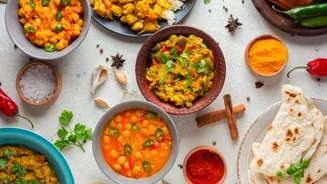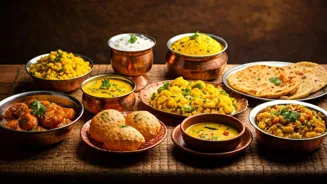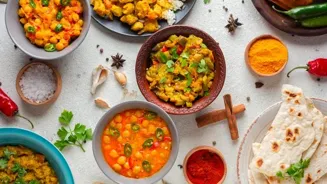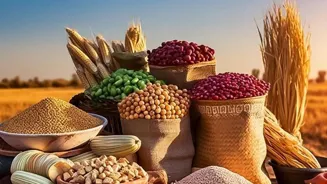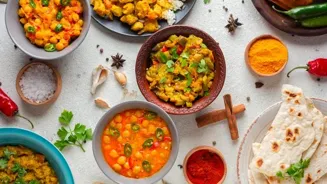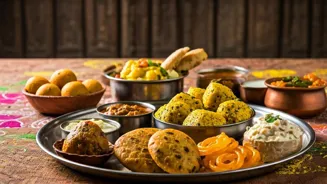Discover the captivating journey of Indian snacks, from traditional roots to modern innovations. Dive into the flavorful evolution
India, a land of diverse cultures and traditions, is also a haven for food
lovers. And when we talk about food, how can we forget the delightful world of Indian snacks?
From age-old recipes passed down through generations to modern interpretations bursting with innovation, the evolution of Indian snacks is a fascinating journey. It reflects not only our changing tastes but also the impact of globalization and the ever-evolving culinary landscape.
Let's take a closer look at this delicious transformation.
Traditional snacks rooted in regional flavors made with love
Our snack story begins with the traditional. Think about your grandmother's kitchen, the aroma of freshly ground spices, and the sight of homemade goodness. These snacks were simple, made with readily available ingredients, and deeply rooted in regional flavors.
Every state, every community, had its own specialty, a unique offering to tantalize the taste buds. The process was slow, deliberate, and filled with love.
Regional Indian snacks unite families, celebrate traditions with joy
Think of the humble 'namkeen', a mixture of lentils, nuts, and spices, each region offering its distinct blend. 'Chivda', flattened rice tempered with spices, is a staple in many Indian homes.
And who can resist the sweet allure of 'ladoos' and 'barfis', melt-in-your-mouth confections that are perfect for celebrations? These traditional snacks weren't just about filling a hunger gap; they were about sharing, celebrating, and connecting with our roots.
They were often prepared during festivals and special occasions, strengthening family bonds and preserving cultural heritage.
Locally sourced ingredients for nutritious snacks
The ingredients used were locally sourced and often had nutritional benefits. For example, millet-based snacks were common in regions where millet was a staple crop, providing essential nutrients and energy.
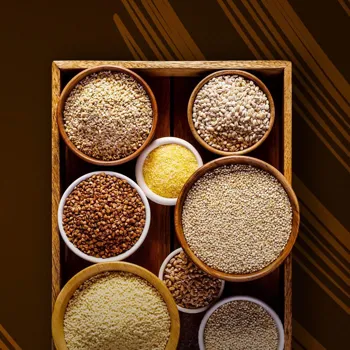
Similarly, jaggery, a natural sweetener, was used instead of refined sugar, adding a healthy touch to the sweet treats. The emphasis was on natural flavors and simple cooking methods, making these snacks wholesome and satisfying.
Snacks carry cultural memories, evoke nostalgia and tradition
These snacks hold immense cultural significance. They are part of our collective memory, evoking feelings of nostalgia and warmth. They are associated with festivals, family gatherings, and childhood memories. Passing down the recipes for these snacks is like passing down a piece of our heritage.
South Indian murukku and Gujarati dhokla symbolize tradition and culinary creativity
Consider the 'murukku', a crunchy spiral snack popular in South India. It's often made during Diwali and other festive occasions, symbolizing prosperity and good luck. The intricate process of making murukku is a tradition in itself, often involving multiple family members working together.
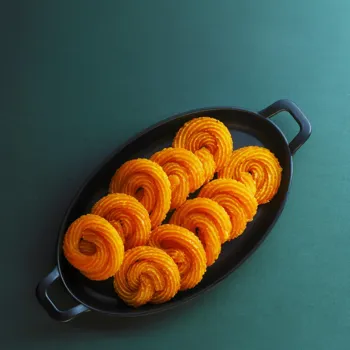
Likewise, in Gujarat, 'dhokla', a steamed savory cake made from fermented batter, is a breakfast staple and a popular snack, representing the region's culinary ingenuity.
Traditional snacks reflect ancestors' resourcefulness & flavor
These traditional snacks are not only delicious but also reflect the resourcefulness and ingenuity of our ancestors. They were created using simple ingredients and techniques, yet they are packed with flavor and nutrition.
They represent a time when food was valued for its simplicity and its ability to bring people together. While the modern snack industry has introduced new flavors and formats, the traditional snacks continue to hold a special place in our hearts and on our palates.
Globalization impacts Indian snack market with foreign snacks
As India opened its doors to the world, new flavors and ingredients began to find their way into our kitchens. Globalization brought with it processed foods, international cuisines, and a whole new world of snacking possibilities.
Suddenly, potato chips, cheese puffs, and instant noodles were vying for space on our shelves. This influx of foreign snacks had a significant impact on the Indian snack market, influencing both production and consumer preferences.
Packaged snacks change snacking habits, raising health concerns
The convenience factor of these packaged snacks was a major draw, especially for busy urban dwellers. Unlike traditional snacks that required time and effort to prepare, these were ready to eat and easily accessible.
This led to a gradual shift in snacking habits, with more and more people opting for these convenient alternatives. However, this also raised concerns about the nutritional value and the potential health risks associated with processed foods.
This paradigm shift forced the industry to rethink and readapt strategies to keep the consumer intact.
Indian manufacturers innovate fusion snacks, blending traditional flavors with modern formats
Indian manufacturers began to adapt and innovate, blending traditional flavors with modern formats. This led to the creation of fusion snacks that catered to the evolving tastes of the Indian consumer.
Think of masala-flavored potato chips, achaar-flavored noodles, and paneer-tikka flavored crackers. These innovative combinations were a hit, appealing to those who wanted a taste of tradition with a touch of modernity. This era brought a lot of options.
Snack industry shifts focus to healthier options
The snack industry also began to focus on health and wellness, offering healthier alternatives to traditional snacks. Baked chips, multigrain crackers, and sugar-free sweets gained popularity among health-conscious consumers.
This trend was driven by a growing awareness of the health risks associated with processed foods and a desire for healthier snacking options. Even the most basic biscuits that were available were now available with oats and other health promoting ingredient.
Indian snack market: traditional vs. modern snacks cater to diverse preferences
In today's India, the snack market is a dynamic mix of traditional and modern. While traditional snacks continue to be cherished for their authentic flavors and cultural significance, modern snacks offer convenience, innovation, and a wide range of options.
The consumer is now presented with a plethora of choices, catering to diverse tastes and dietary preferences. The consumer is also better informed with regards to the options available.
Online food delivery boosts snack demand, spurring market growth
The rise of online food delivery services has further transformed the snacking landscape. Consumers can now order their favorite snacks from the comfort of their homes, at any time of the day.
This has led to an increase in demand for both traditional and modern snacks, as consumers seek out convenient and delicious options to satisfy their cravings. This also increases competition as multiple new brands and options get easily introduced in the market.
Snack industry shifts to sustainable practices amid consumer demand
The snack industry is also adapting to the growing demand for sustainable and eco-friendly products. Many manufacturers are now using biodegradable packaging and sourcing ingredients from local farmers, reducing their environmental impact.
This trend reflects a growing awareness of environmental issues among consumers and a desire to support businesses that are committed to sustainability. Even individual are looking for brands.
Indian snacks innovate for health, taste, sustainability, and fusion
The future of Indian snacks looks bright, with continued innovation and a focus on health, convenience, and sustainability. As consumers become more health-conscious, we can expect to see more snacks made with natural ingredients, lower in sugar and salt, and packed with nutrients.
The trend towards fusion snacks is also likely to continue, as manufacturers experiment with new flavors and formats to appeal to the evolving tastes of the Indian consumer.
Snack industry must tackle packaging waste for eco-friendly future
The snack industry will also need to address the challenges of packaging waste and environmental sustainability. As consumers become more aware of these issues, they will demand more eco-friendly packaging and production methods.
This will require manufacturers to invest in research and development to find innovative and sustainable solutions.
Evolution of Indian snacks: adaptation, innovation, love for good food
Ultimately, the evolution of Indian snacks is a story of adaptation, innovation, and the enduring love for good food.
From the humble beginnings of homemade treats to the diverse and dynamic snack market of today, Indian snacks continue to delight and satisfy, reflecting the rich culinary heritage and the ever-evolving tastes of the nation. And that’s something to celebrate, one delicious bite at a time.
The food industry has come a long way, and so is set to continue as well.
Personalized snack options on the rise in the snack industry
We can also expect to see more personalized snack options, tailored to individual dietary needs and preferences. This could include snacks made with gluten-free ingredients, vegan options, and snacks designed for specific health conditions or fitness goals.
The opportunities in the snack industry are immense.
AI Generated Content. Glance/InMobi shall have no liability for the content